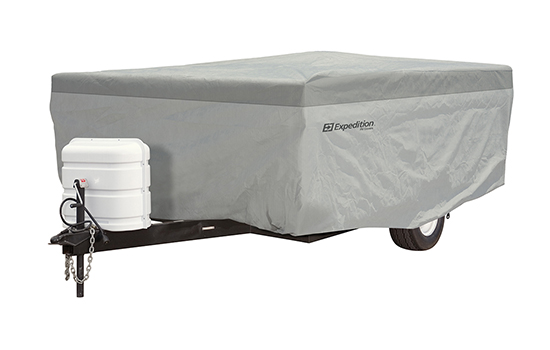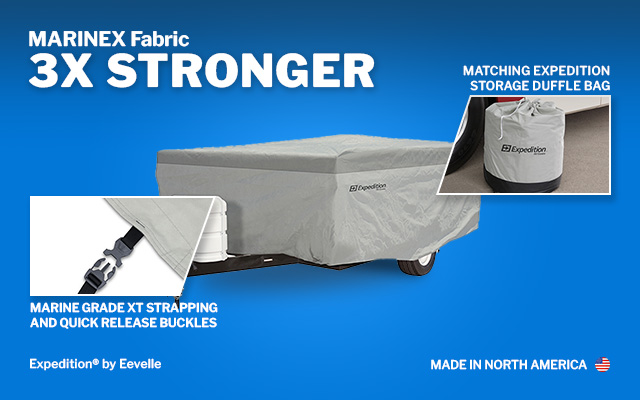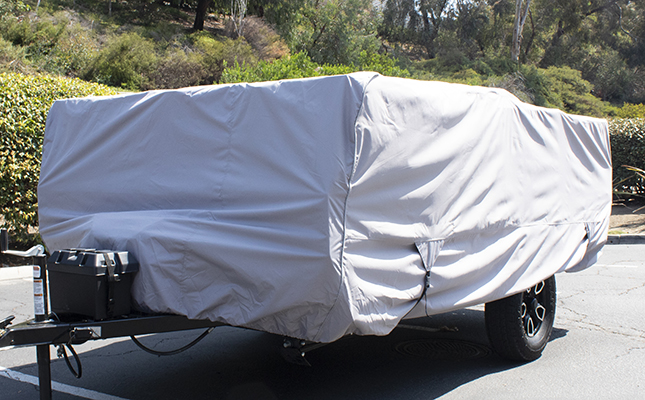views
A Camper’s Guide to Affordable and Durable Pop-Up Camper Covers
When you finally get your hands on that pop-up camper, it's like getting the freedom you’ve always wanted. Road trips, weekend getaways, and camping in the wild all become a part of your life. But here’s the harsh truth: if you don’t protect that camper when it’s not in use, you’re basically watching your investment rot.
And that’s where the pop-up camper covers come in. It’s not just a piece of fabric. It’s the one thing standing between your camper and a world of weather, sun, dust, and bird poop. In this guide, we’re going to break down how to find a camper cover that’s both affordable and built to last—because you shouldn’t have to choose between saving money and saving your camper.
Why Do You Need a Pop-Up Camper Cover?
Think of your pop-up camper as your car’s cousin. It's made to be outdoors, sure—but not all the time. When it's parked for days, weeks, or months, it needs protection. A quality camper cover is like a weatherproof jacket. It keeps the elements out and the condition in.
Here’s what a good cover for a pop-up camper defends against:
Rain: Soaks into seals and causes water damage.
Sun/UV Rays: Fades colors, cracks seals, and cooks the interior.
Snow and Ice: Adds weight and moisture, leading to rust or leaks.
Tree Sap, Pollen, and Debris: Annoying to clean and can stain the surface.
Bird Droppings: They are highly acidic and damaging over time.
Dust and Dirt: Causes surface scratches and grime buildup.
No one wants to show up for a road trip and find their camper covered in muck or mildew. A pop-up camper cover prevents all of that, and it doesn’t cost much compared to what you’d spend fixing water damage or replacing faded vinyl.
What Makes a Pop-Up Camper Cover “Durable”?
Not all covers for pop-up campers are worth your money. Some rip in the wind after two storms. Others trap moisture and grow mold. You want one that’s tough, breathable, and fits like a glove.
Here’s what to look for in a durable camper cover:
Multi-Layer or Heavy-Duty Material
Look for covers made from polypropylene, polyester, or ripstop fabric. The more layers, the better the protection. At the very least, you want UV resistance and water repellency.
Ventilation Panels
Good camper covers don’t suffocate your trailer. Built-in air vents reduce moisture buildup and help prevent mildew and mold (two words no camper owner ever wants to hear).
Reinforced Corners and Seams
This is where cheap covers fail. You need to look for covers with extra stitching and padding around high-stress areas so it doesn’t tear at the first sign of wind.
Secure Fit (Elastic Hems & Straps)
Flapping fabric causes damage. Choose a cover with straps, buckles, or elastic hems to keep it snug, even during storms.
Zippered Access Panels
Need to grab something from your camper without removing the whole cover? Zippered panels are what you need.
Top Tips for Choosing the Right Cover for Your Pop-Up Camper
Measure Your Camper Properly
Don’t guess. Take actual measurements from bumper to bumper and include accessories like ladders or spare tires. Size matters—too small and it won’t fit; too big and it’ll flap like a loose tarp.
Buy for Your Climate
Live in a wet climate? Get something waterproof and breathable.
Lots of sun? You need UV-blocking fabric.
Snowy winters? Go multi-layered and reinforced.
Check the Warranty
A solid camper cover should come with at least a 1-year warranty. Some of the better brands offer 2–3 years, which gives you confidence that they stand behind the product.
Read the Reviews
Not the paid ones—the real ones. Look for mentions of “lasted through a storm,” “fit perfectly,” or “still looks new after a year.”
Caring for Your Camper Cover
Even the best cover needs a little love. Here’s how to keep it working for years:
Clean it gently with mild soap and water—no bleach or harsh chemicals.
Dry it completely before storage to avoid mold.
Fold and store it in a dry, rodent-free area when not in use.
Inspect it regularly for small rips or wear and fix them ASAP.
Avoid These Common Mistakes
Let’s not sugarcoat it—these are the ways people wreck their pop-up camper covers:
Buying the wrong size – Results in flapping, ripping, or water pooling.
Choosing the cheapest option – You'll spend more replacing it than if you bought a better one upfront.
Leaving it on when it’s soaking wet – That’s a fast track to mold.
Ignoring ventilation – A cover without air circulation is a mold factory.
Using bungee cords or random straps – Use the straps designed for your cover.
Final Word
Your camper isn’t just a trailer. It’s your home on wheels. And protecting it with a quality pop-up camper cover is one of the smartest, easiest things you can do. Not all covers are created equal, but with a little research, and now that you’ve read this guide, you’re ahead of 90% of camper owners. You don’t need to overspend, but you do need to invest wisely. Think of your camper cover as a long-term shield. The better the shield, the longer your adventures last.



Comments
0 comment